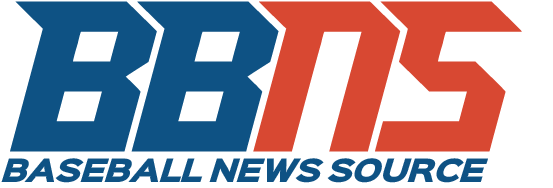
Snider is hitting .325 through 14 games with Pittsburgh (Krustation @ flickr)
Pittsburgh didn’t make the salary splash some may have wanted at the 2012 trade deadline, one they entered as bona fide buyers for the first time in nearly 20 years.
Instead, General Manager Neal Huntington opted for value and years of control, acquiring affordable assets in OF Travis Snider, 1B Gaby Sanchez, RP Chad Qualls and SP Wandy Rodriguez.
Rodriguez was the biggest acquisition, a veteran starter capable of eating up innings who is under contract for two more seasons. But at a deadline in which the Pirates were as many as 15 games over .500, such small-headline (if not forward-thinking) deals left many believing the Pirates were still operating with a mentality towards rebuilding.
Wandy Rodriguez, P
Rodriguez was the Pirates’ priciest trade deadline acquisition, arriving from Houston at cost of prospects P Rudy Owens, OF Robbie Grossman and P Colton Cain.
Rodriguez had a 7-9 record and 3.79 ERA in 21 starts with Houston before being traded.
Since coming to the Pirates, Rodriguez has an 0-2 record in three starts with a 4.79 ERA, .267 BAA and 7 BB/11 Ks. Though his numbers haven’t screamed value, the Pirates roster is currently experiencing a second consecutive late-season dip and Rodriguez’ presence is saving the struggling rotation unnecessary innings pitched.
Rodriguez is under contract for each of the next two seasons at $13 million per year, though the Astros will eat some portion of that salary. It may have cost the Pirates a decent crop of talent, especially if Grossman and Owens reach their ceilings, but Rodriguez brings a steady veteran presence that no starting rotation can ever have too much of.
Travis Snider, OF
Perhaps the steal of their trade deadline, Pittsburgh landed Snider at the cost of reliever Brad Lincoln.
The deal has been much derided in Pittsburgh, where Lincoln was emerging as a shutdown late reliever and future candidate to succeed Joel Hanrahan. However, trading middle relief for an everyday player, especially one with the power potential that Snider has, is a no-brainer.
Thus far, Snider is hitting .325/.364/.450 through 14 games with 3 XBH and 5 RBI.
The best part of the deal might be Snider’s team control. The Pirates own his rights through the 2015 season. Snider is currently arbitration-eligible in each year of his current deal, but the Pirates could opt to buy out those years if they feel he is a better long-term option than Jose Tabata or Alex Presley.
In the short-term, Snider has provided a relatively inexpensive outfield bat that is far more reliable than the team’s remaining options after Andrew McCutchen and Starling Marte. If Snider indeed plays to his potential on a regular basis, the Pirates will have a non-platooned outfield for the first time in years.
Gaby Sanchez, 1B
Casey McGehee provided decent offense for the Pirates through the first half of the season but fell off in the weeks preceding the trade deadline. With that, the Pirates were able to turn another deal with the New York Yankees, sending McGehee to New York for hard-times reliever Chad Qualls.
Qualls was a throw-in, however, as the deal was made to open the first-base platoon to 2011 All-Star Gaby Sanchez.
Sanchez had fallen into an extended slump with the Miami Marlins and spent much of the 2012 season with their AAA affiliate club. Pittsburgh used the opportunity to make another cost-effective upgrade at the position.
Sanchez hasn’t torn up the platoon but has at least been an upgrade over McGehee. Sanchez is hitting .250/.323/.250 in 12 appearances and 28 at-bats with the Pirates.
The Pirates dealt depth outfielder Gorkys Hernandez and their competitive balance draft selection to acquire Sanchez and prospect Kyle Kaminska, so it wasn’t exactly a high-risk situation. However, Sanchez is just a year removed from an All-Star appearance.
If he can regain that form down the stretch, he’ll have been a useful and cost-effective acquisition for a team that must always have cost-consciousness and a long-term vision on its mind, even in the midst of its first pennant race in two decades.
